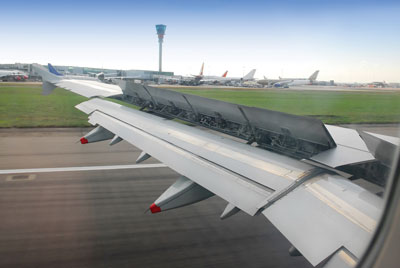
Features
Operations
Alternate Approach: Running out of runway
For most of the history of international air transport, London’s Heathrow Airport has stood out as a global crossroads. But for how much longer?
September 10, 2012 By David Carr
For most of the history of international air transport, London’s Heathrow Airport has stood out as a global crossroads. But for how much longer? An increasing number of destinations where the world wants to travel do not cross through Heathrow.
 |
|
| Air Canada is one of Heathrow’s top 10 airlines, while Canada is the airport’s second largest market outside Europe. PHOTO: SHUTTERSTOCK |
Heathrow is the world’s busiest international airport and third busiest overall, handling 69.4 million passengers in 2011. But with its two runways operating at more than 99 per cent capacity, Heathrow is turning away airlines and new routes from emerging economies. Frontier Economics, a U.K.-based consultancy reports there are 21 emerging market destinations with daily flights to major European hubs that are not served from Heathrow, including seven major cities in China alone.
“Airlines are ready to vote with their feet and base new flights outside of the U.K. because of a lack of government policy supporting aviation,” said Colin Matthews, chief executive of BAA, the operator of Heathrow and five other British airports.
Where there is an airport there will be politicians seeking cover. But Britain’s coalition government appears especially skittish. It postponed for a third time a major review of airport capacity. The 12th such review since the last full-length runway was opened in England’s crowded southeast in 1948, according to Katja Hall, chief policy director for the Confederation of British Industry’s.
A third runway for Heathrow was given the go-ahead in 2009. Seeing an opportunity to burnish its green credentials and gain seats in constituencies surrounding the airport, the opposition Conservatives campaigned hard against the runway, a position that aligned with their eventual coalition partners. And one that appears to confound Hugh Dunleavy, commercial director of Malaysia Airlines and a former WestJet executive. “People may not like another runway, but when they bought their house didn’t they notice there was an airport there?” he asked the Telegraph.
So strong has been the coalition’s opposition that the serial-delayed airport capacity review could not even consider added runway capacity at Heathrow, a decision that will seriously harm the review’s effectiveness if allowed to stick.
“The fact that we don’t have an aviation policy two years into this government – and they’re going to exclude the obvious – tells you everything you need to know,” a frustrated Willie Walsh, chief executive of the International Airlines Group, parent of British Airways, told the Guardian newspaper at the International Air Transport Association meeting in Beijing.
British Airways, which has built a powerful global brand out of its Heathrow hub is most vulnerable, although many have a dog in this hunt including Caisse de depot et placement du Quebec, the powerful Quebec pension fund that has a 23 per cent stake in the consortium that owns BAA. Air Canada, too. Despite a tie-up with Lufthansa, Heathrow is the airline’s busiest international station. With 12 flights daily and 2.6 per cent traffic share, Air Canada is one of Heathrow’s top 10 airlines. Canada is the airport’s second largest market outside Europe.
Calin Rovinescu, Air Canada’s chief executive, describes Heathrow as an aviation leader that risks falling behind airports like Dubai, already on track to knock the U.K. hub off its “busiest international” perch by 2016. “When you look at the emerging markets of the world we are often ready to criticize or compliment them, but we are rarely ready to learn from them,” he told Wings.
If there has been a reoccurring theme in the capacity review it is this: no amount of high speed rail, urgently needed extra runway capacity at other southeast airports or blue-sky proposal to replace feathered birds with aluminium ones at an alternative airport in the Thames estuary will stem the bleeding of air transport from the U.K.
Is the message finally getting through? Perhaps. The Conservative architect of the government’s green policy has admitted blocking a third runway is a mistake. Speculation is that the capacity review was delayed for a third time because the majority Conservative side of the governing coalition is readying a climb down to at least consider a third runway. Still, the calendar won’t be ignored. With an election expected in two years a third runway will again become a controversial football. All parties would like it kicked into the tall grass. But none can ignore the clock on U.K. aviation is running out.
David Carr is a Wings writer and columnist.